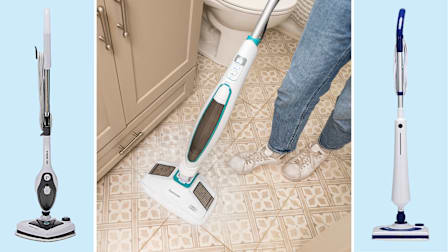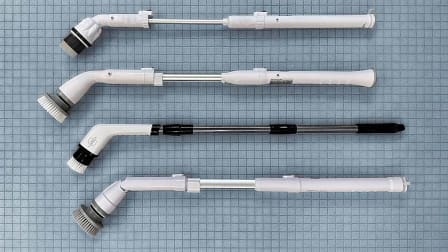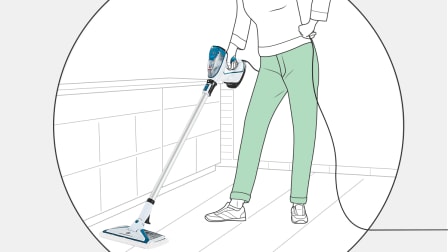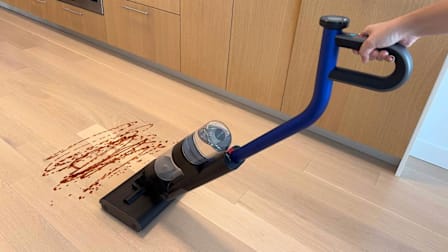Cannon explains that viruses, in general, are very susceptible to heat.
“Viruses come ‘shrink-wrapped’ in a layer of fat that helps them to survive in our bodies, by acting as a type of stealthy covering,” she says.
The spikes on the outside of this fat layer allow it to latch onto and enter your body’s cells. However, this layer of fat is quite fragile and can easily be broken down by high temperatures.
“You can think of it as being melted, if you like, by high temperatures,” Cannon says. “And once that happens, the virus particle is no longer intact and can no longer infect anything.”
But how high does the temperature need to be? Many common household germs will begin to die at temperatures above 160° F, says Alexandra Seguin, MSN, lead infection preventionist at Rush University Medical Center in Chicago. And most germs will be completely eliminated at temperatures between 175° F and 212° F if that temperature is sustained for a period of time.
So while steam mops can reach those temperatures, you’d have to hold the mop in place for it to be effective against viruses. The time required to do this can vary based on the temperature, the surface, and the type of virus, but you should be able to eliminate most household germs if a steam mop is pressed against the floor for several minutes at a high enough temperature, Seguin says. (This can be difficult to accomplish with steam mops that require you to manually pump them to generate steam, which can cause the temperature to fluctuate.) Seguin suggests that consumers refer to the mop manufacturer’s instructions for use, which should provide detailed information on the minimum temperature and contact time required to eliminate microorganisms.
But there’s another catch: Steaming your floor for minutes at a time may kill pathogens—but may also damage your floor.
While many manufacturers say that their steam mops can be used on various hard floors, including sealed wood, you might want to think twice about that. The National Wood Flooring Association, for instance, warns against using wet mops or steam mops on wood floors because they might damage the finish and the wood flooring itself over long periods of time. It’s generally safer to use a steam mop only on ceramic and porcelain tiles. Regardless of the flooring material, if your flooring is still under warranty, check with the manufacturer to make sure using a steam mop won’t void it.
Instead of using a steam mop to disinfect your floors, you can use an Environmental Protection Agency-registered disinfecting product or a diluted bleach solution. You’ll need to leave the disinfectant on the surface for a long enough contact time to kill the germs effectively. You can find the contact time in the usage directions of your disinfectant; make sure also that the product is recommended for use on the type of flooring you have. Remember, too, that simply cleaning with soap and water removes most harmful viruses and bacteria from surfaces, according to the Centers for Disease Control and Prevention.

































